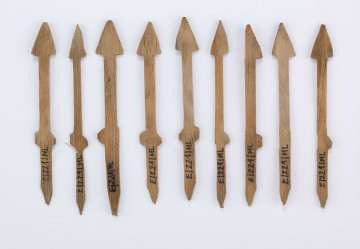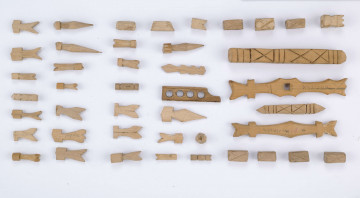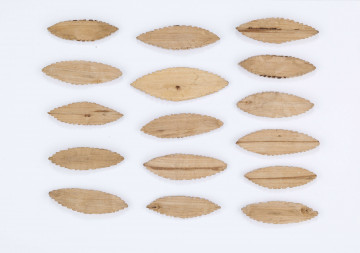
Game `Pick-up Sticks`
1901 — 1920
National Museum in Lublin
Part of the collection: Folk craft of the Lublin Region (19th/20th c.)
Toys have accompanied children from their earliest years. They played an essential role in their development and were therefore adapted to their age. A baby of just a few months was interested in anything that moved and made sounds. That is why one of the first toys a baby received was a rattle. According to legend, the rattle was invented by Archytas of Taranto, a Pythagorean mathematician and philosopher. He was so disturbed by his own children that he decided to give them something to play with to gain some peace and quiet for his scholarly discussions with Plato. In Rome, rattles were made of wood, clay and bronze. They had a simple geometric shape, at other times they were formed, among other things, in the likeness of animals. They were also rattled with dried fruits with large seeds, such as pomegranates or calabashes. It is therefore not surprising that clay or bronze rattles also had this form.
The rattle quickly became popular. Clay rattles, conical, pear-shaped, sack-shaped, heart-shaped, spherical, bubble-shaped with necks, and bird-shaped, were found during archaeological excavations in Biskupin. Inside were pebbles, the movement of which caused a rattle. These small objects were clumsily made. They were probably made by children or adults ‘on the spur of the moment’. Wooden rattles, of which this 20th-century example is a rattle-figure resembling a clown, required greater carpentry skills and even appropriate equipment for processing. They were certainly more durable and safer, thanks to their smooth shapes.
In the early Middle Ages, the rattle was attributed magical properties. Hanging around the neck of a new-born baby, the mini-rattle was supposed to protect from charms and illnesses and, by making noise, ward off evil forces and spirits that might lurk near the cradle. It was more than just a toy. Parents understood a child's life was fragile, so they tried to give it the best possible protection, including magical protection. A beautifully decorated object given to a child became its amulet. Nowadays, even though the material used to manufacture rattles has changed, this toy is still meant to soothe. A plastic or silicone rattle is an inseparable attribute of a baby, but it is the silver or gold ones that the family brings as a present to a new-born child, more for good luck than for play.
Author / creator
Dimensions
cały obiekt: width: 14 cm, diameter: 4,5 cm
Object type
toy
Technique
painting technique
Material
wood, paint
Creation time / dating
Creation / finding place
Owner
The National Museum in Lublin
Identification number
Location / status

1901 — 1920
National Museum in Lublin

1901 — 1920
National Museum in Lublin

1901 — 1920
National Museum in Lublin
DISCOVER this TOPIC
National Museum in Lublin
DISCOVER this PATH
Educational path